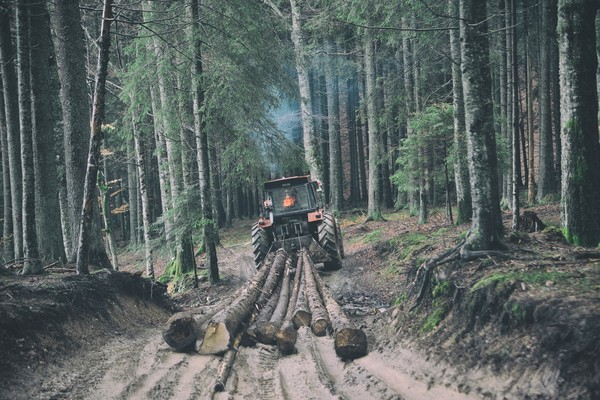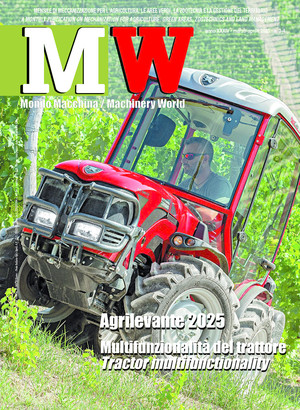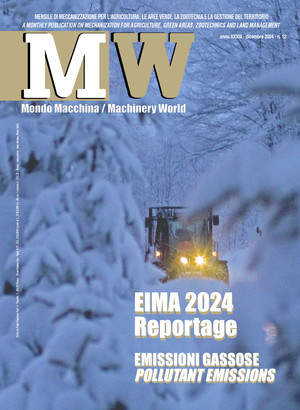
Forest winches, types and applications
From emergency management to heavy material transport, winches are indispensable equipment for tackling the demanding challenges of the mountain environment. Numerous solutions, from manual to electric, are available on the market
Winches are mechanical devices that develop traction force via a cable or rope that is progressively wound onto a rotating drum. They are used in numerous industrial fields for moving and/or tensioning loads, demonstrating high operational efficiency with precise control of the forces applied. Power transmission is normally mechanical, with stable and safe motion transfer.
The main components. May have structural and/or operational functions. The winch frame provides the structural support necessary to house the components and must be designed to withstand the mechanical stresses imposed by the load and the force transmission system. The drum is the main component and consists of a sturdy steel cylinder on which the rope, made of metal or synthetic material, is wound. The drum can be rotated manually, mechanically, hydraulically, pneumatically or even electrically. In high-end models, the drive system is integrated with speed reducers and gear or belt transmissions, designed to optimize the driving torque in relation to the resistance of the applied load.
An essential component for safety and stability in load handling is the brake, which must stop the drum movement safely and permanently, ensuring that the load is held in the desired position. The braking systems can be mechanical, hydraulic or electromagnetic; the most complete winches can be equipped with progressive release devices that allow dynamic traction control. The rope guide, often integrated with distribution rollers or controlled winding solutions, prevents overlapping or jamming, ensuring uniform tension distribution and reducing cable wear.
Another fundamental component of forestry winches is the shield. This is a structural element of primary importance, designed to ensure operator safety and operational efficiency in forestry contexts. Generally made of high-strength steel, it performs a protective function against impacts and flying debris, as well as contributing to the stability of the traction unit during towing. In many configurations, the geometry of the shield is optimized to facilitate the partial lifting of timber, reducing friction with the ground and increasing the efficiency of the logging process. Some models incorporate additional functional solutions, such as tool holders or hydraulic folding systems, which allow the shield itself to be moved automatically.
In the latest generation models, sensors and electronic monitoring systems are often implemented to detect various operating parameters, such as cable tension, winding speed and load conditions, in order to increase the level of automation and safety of the device. The combination of new technologies and high-performance materials, such as high-strength steels and light alloys, has made it possible to maximize the efficiency of winches, minimizing equipment failures and potential risks to the operator.
Types. Winches are normally classified according to their drive system, performance and field of application. Each configuration is designed to meet specific operational requirements, ensuring different levels of power, control and safety.
The simplest version is the manual winch, operated by a crank handle and a rack. Its structure is compact, and, obviously, it does not require an external power source for operation, making it ideal for applications that require mobility and versatility, such as lifting light loads or anchoring temporary structures. However, their traction capacity is limited, depending largely on the effort applied by the operator.
Electric winches use a DC or AC motor, depending on the application. They are widely used in vehicle recovery, industry and medium-load lifting operations. Thanks to the possibility of integrating electronic control circuits, they offer greater operational precision than manual models but require a suitable power source. Furthermore, they can be subject to overheating during prolonged use.
Hydraulic winches use the pressure of a fluid (usually mineral oil) to drive the drum and generate the necessary traction. They often have more power than electric models, making them suitable for heavy-duty applications such as towing heavy vehicles or use on industrial equipment and specialized vehicles. The accompanying hydraulic system, usually consisting of a pump and motor, increases efficiency and operational reliability but limits its application in relation to the system’s availability.
Pneumatic winches use compressed air to generate traction force and are useful in potentially explosive environments, such as petrochemical plants and mines, where electric motors must be avoided for safety reasons. Pneumatic models are characterized by high resistance to adverse environmental conditions and relatively simple maintenance, but their efficiency depends on the availability of an adequate air compression system.
Finally, aeronautical winches are specifically designed for installation on helicopters and rescue aircraft. These devices must comply with strict safety and weight standards, combining high-efficiency traction systems with advanced braking and control devices. They are manufactured from high-performance materials to reduce weight without compromising structural strength.
Forest winches. Winches are commonly used in mountainous areas to transport materials, install infrastructure, recover vehicles and equipment, and rescue people.
When it comes to transporting materials, winches are used to move loads in hard-to-reach areas, such as high mountain refuges or alpine construction sites. In these cases, they are integrated with suspended cable systems to move loads electrically or hydraulically efficiently and controlled. However, winches can also be useful for installing infrastructure, laying cables, Tibetan bridges and other suspended structures. Their ability to exert constant and progressive traction allows structures to be positioned and tensioned with precision, minimizing the risk of damage to the material. Probably the most common use of winches in mountainous areas is for logging.
Models for logging. Due to the rugged terrain and logistical difficulties, logging in mountainous areas is one of the most complex and demanding operations in the forestry sector. In this context, winches play an essential role in moving timber from forest areas to storage or processing areas, ensuring efficiency, safety and reduced environmental impact.
They can be classified according to their drive system and operating configuration. The most common models are mechanical, hydraulic and electric, generally installed on forestry tractors. Their main function is to pull logs tied with steel cables, often with the aid of pulleys.
The characteristics of the models available vary mainly according to the pulling force, which can usually range from 2,000 to 12,000 kg. The tractor's power (and therefore weight) must be adequate for the winch's pulling capacity. For larger models, tractors with over 100 Hp may be required. The rope winding speed is generally between 0.6 and 1.4 m/s, while the drum capacity can reach 100 m of rope with a diameter of 10 mm. The winch's performance affects its overall weight, which can reach up to 800 kg for the most robust models; this is an important factor to consider for the tractor's stability during operation. Logging can be carried out with a single rope, a solution suitable for work on moderately sloping terrain. In areas with steep slopes and/or natural obstacles (trees, rocks, very uneven ground), however, winches with double ropes are used, which guarantee greater stability and precision in handling the material.
Radio-controlled winches represent an important technological development. They allow the operator to control the device from a distance, greatly improving operator safety and reducing the risk of accidental contact with the traction cable. As these machines operate with heavy loads and often in difficult conditions, it is important to carry out regular maintenance on all parts of the winch, including periodic checks of the ropes, braking systems and anchoring structures, with particular attention to operator protection and load stability.
Motor winches and portable winches
Both are extremely versatile solutions for timber extraction in mountainous environments. Motor winches are usually equipped with an internal combustion engine and are characterized by high traction capacity, making them ideal for operation in remote and difficult-to-reach areas. Their low weight and ability to be transported manually make them particularly suitable for selective log recovery and, more generally, for precision work in inaccessible wooded areas.
Portable winches tend to be lighter and have lower pulling capacity, an internal combustion engine or electric motor can power them. They are typically used for small-scale logging operations or to facilitate the transport of timber over short distances, effectively reducing operator fatigue.








